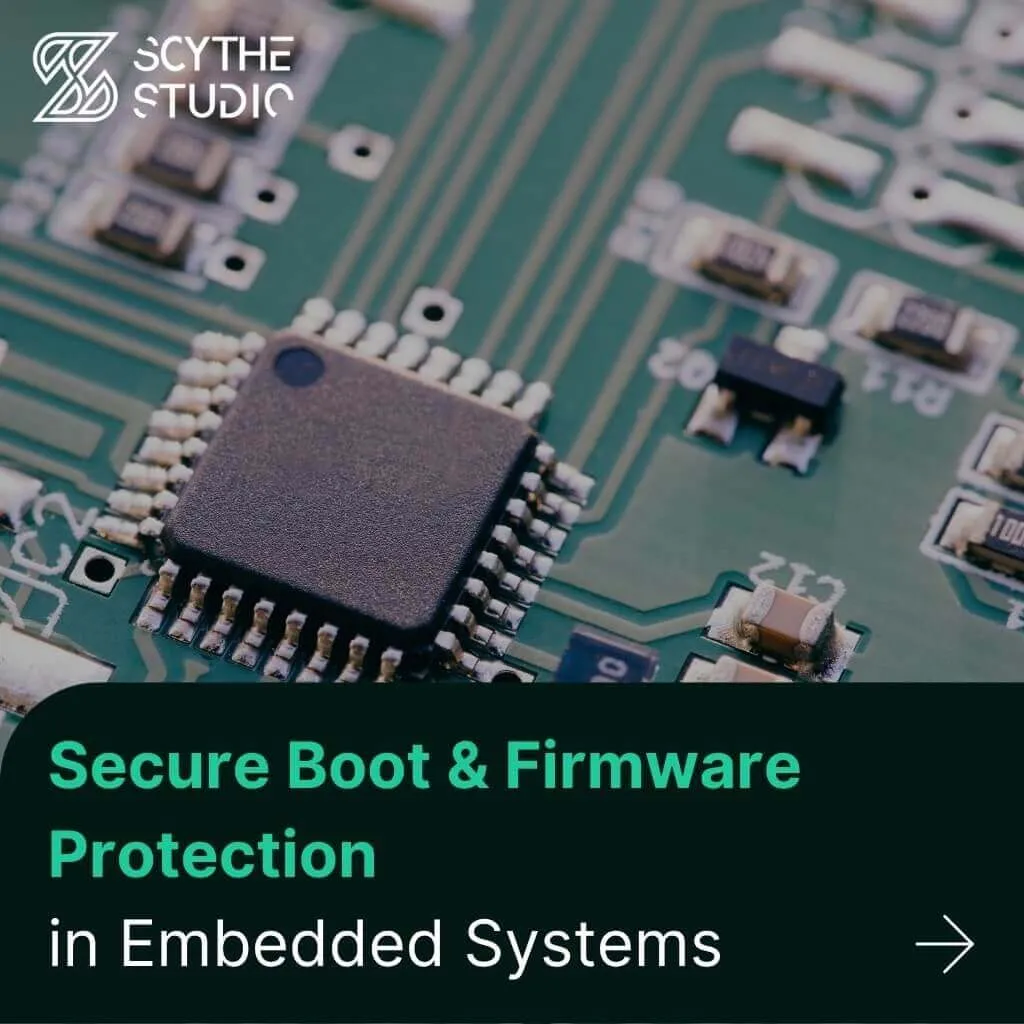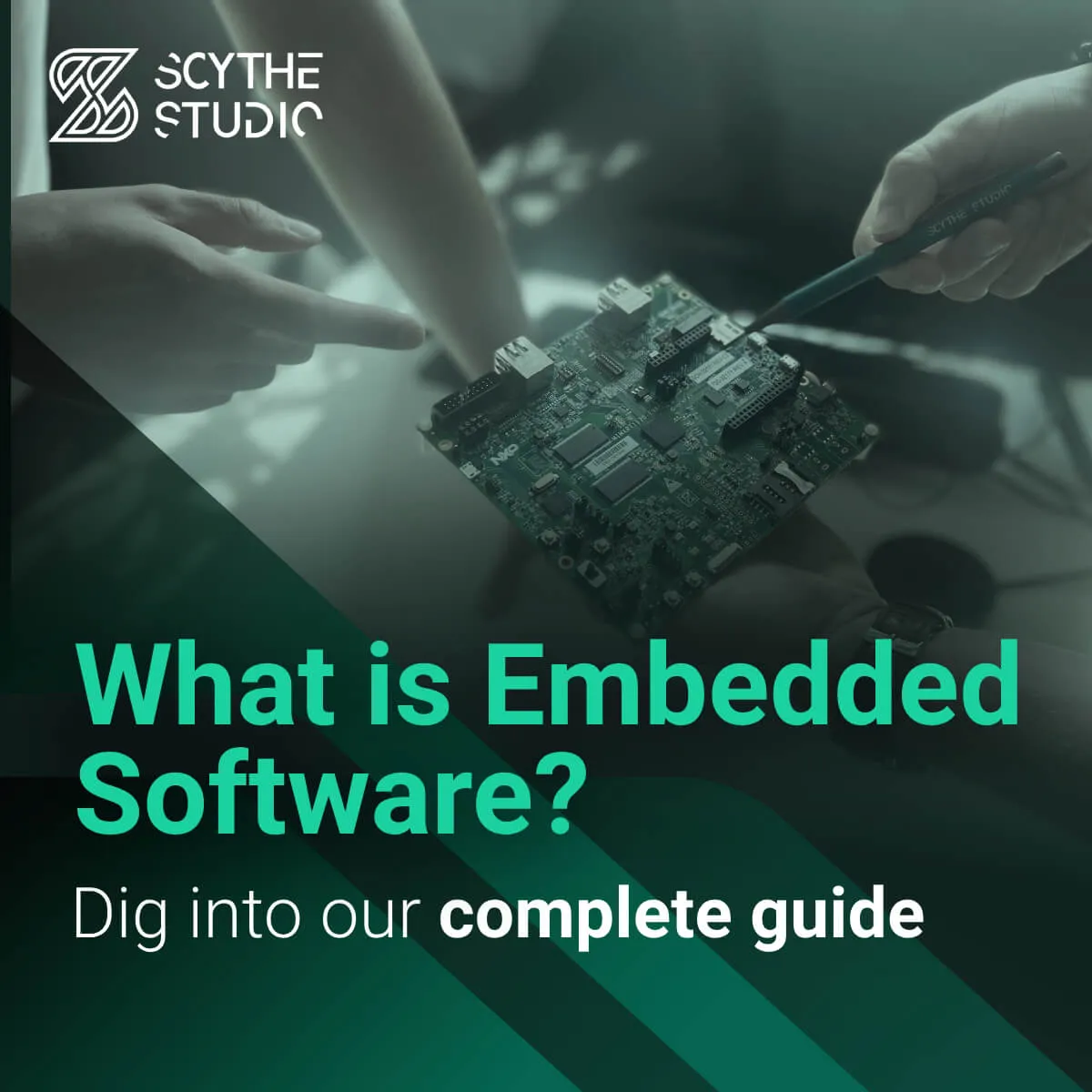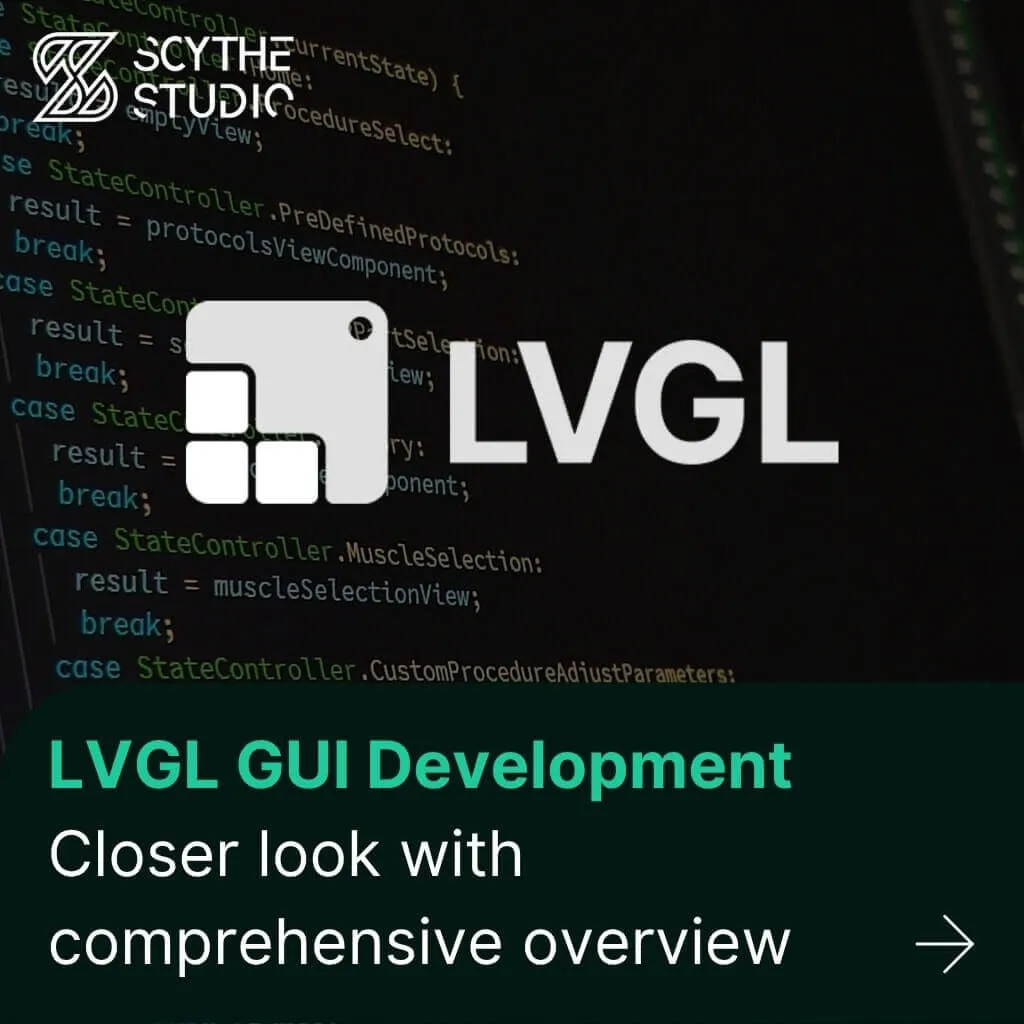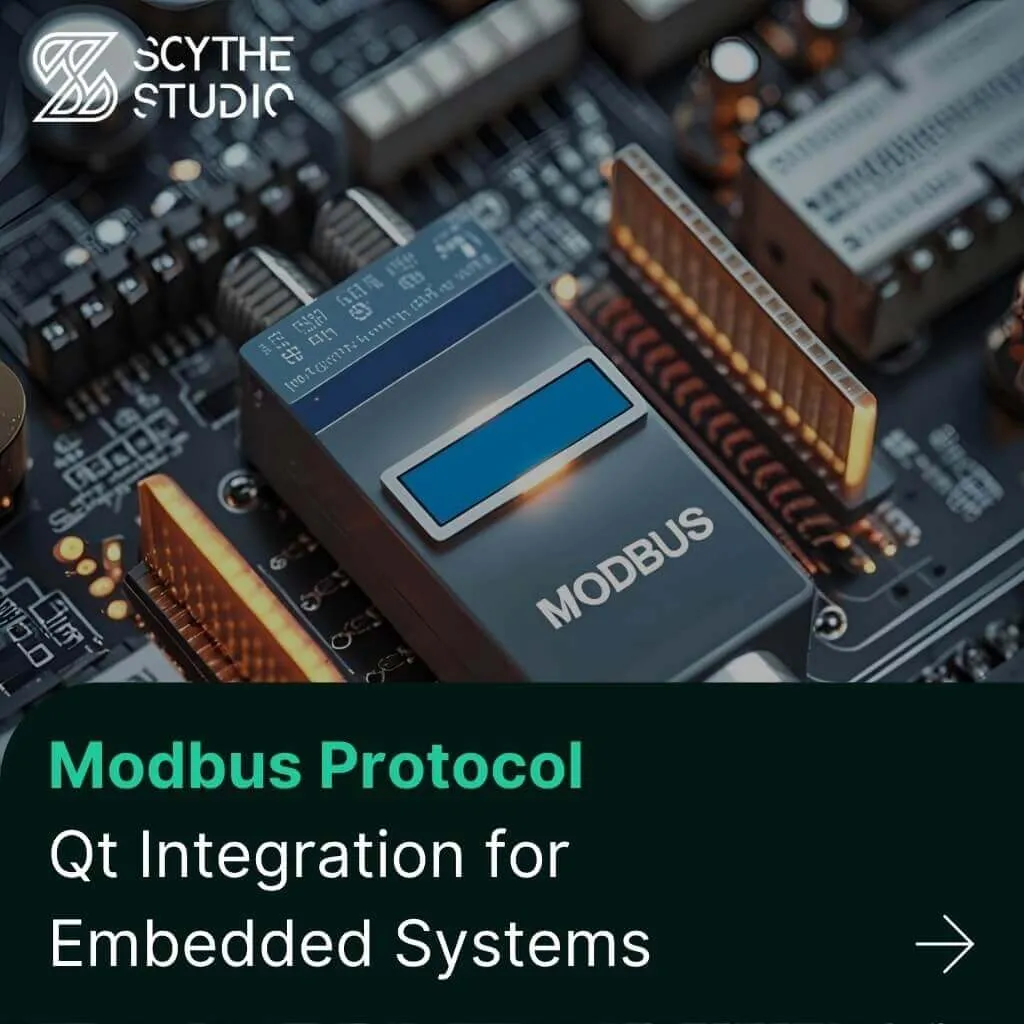
Secure Boot and Firmware Protection in Embedded Systems
Users of embedded devices – from industrial controllers to consumer electronics – are often unaware of hidden vulnerabilities that threaten […]
Join us at Qt C++ Warsaw Meetup - 21.08.2025
Sign up for free!
Many people think that projects count as Embedded Systems only if they run on specialized, low-level hardware devices. However, it’s not true. Embedded systems can be based on any device including PC-grade desktops. They can be high-end medical devices or IoT (Internet of Things) devices.
So, how can I precisely describe an Embedded System? Once upon a time, I had the pleasure of interviewing a seasoned embedded software engineer, and I asked him this question. His answer was to the point, and I endorse it with all my heart. An embedded system is a closed system, meaning a system that you can’t really interfere with to change its behavior in another way than it was planned.
See how we approach embedded systems development for our customers.
Embedded software is a specialized type of software built to perform dedicated control functions within closed devices. It operates within hardware systems to control how the device behaves and interacts with the outside world.
Developing embedded software demands a deep understanding of the hardware constraints and how they impact performance. Unlike general-purpose software, embedded software is tightly integrated with the hardware components, often relying on specialized programming and development tools to ensure optimal performance. It is specifically optimized for speed, size, and power consumption to meet the device’s constraints. Without embedded software, the device wouldn’t be able to perform its intended function.
Depending on the case embedded software engineering can differ a lot when compared to a regular web or mobile development. After all, when writing software you might even burn something. Hardware capabilities are something that each embedded systems engineer has to keep in mind. Embedded software development requires a lot of skills, and patience (pity me on LinkedIn if you also built a Linux image for a few hours)) and attention.
Although often used interchangeably, embedded software and firmware have some differences. Firmware is a type of embedded software, typically stored in flash memory, that provides low-level control for hardware. Firmware is usually written in machine code and rarely updated, running on devices such as routers, keyboards, or simple appliances built upon basic components.
Embedded software, on the other hand, is broader, potentially more complex, and can be updated or replaced. It can include operating systems, device drivers, applications, and communication layers, running on devices like medical instruments, industrial controllers, and IoT devices.
Embedded software operates at the fascinating intersection of hardware and software, where both worlds must work in perfect harmony. Imagine a car’s engine: you can have the best-designed engine, but without the right fuel and precise tuning, it won’t reach its full potential. Similarly, embedded software must be adjusted to the hardware it controls, down to the smallest detail.
The magic starts the moment you press the power button, as the software immediately takes over, bringing the device to life. It seamlessly transitions through initial boot processes, like a conductor guiding an orchestra, before delivering control to the main application that users interact with.
Typically, the software manages low-level functions, including communication with the hardware and peripherals. Additionally, it may contain application software that runs user-facing components, such as a user interface (UI), allowing the device to interact with users or other devices.
An embedded system usually includes:
Embedded systems rely on a microcontroller (MCU) or microprocessor (MPU) to function as the “brain.” These are often assembled with a System on Module (SoM) and a Carrier Board (CB), which integrate essential components and connections for seamless operation.
 MPU for Qt embedded software
MPU for Qt embedded software
The operating system layer can range from a minimalistic, bare-metal setup to a more complex solution like a real-time operating system, custom Linux builds (using Yocto Project or Buildroot), or even full-scale OS options like Ubuntu and Windows, depending on the system’s requirements.
 Simplified Embedded System diagram
Simplified Embedded System diagram
The software stack consists of one or more application software pieces developed using a variety of embedded software development tools, languages, and frameworks. Selecting the right programming environment is crucial. At Scythe Studio, we prefer C++, Rust, and Python for development, and often use the Qt framework for graphical interfaces. Explore more in our “What is Qt Framework?” post.
The choice of the right software tools, operating system, and actual hardware components is a challenge for most embedded software engineers as it depends a lot on evaluating the requirements of the project.
A great example of an embedded device is a patient vital parameters monitor, designed to track key health indicators like pulse rate and blood oxygenation in real-time. This type of medical device needs to collect data with high precision and frequency to ensure that it meets rigorous safety and accuracy standards, making it suitable for continuous patient monitoring. The embedded system at its core processes real-time data from sensors and displays it on an interface, allowing medical professionals to make quick and informed decisions.
 Embedded Medical Device
Embedded Medical Device
In this photo you can see the application was designed to demonstrate a reliable and efficient way of monitoring patient health, focusing on maintaining high data accuracy. By combining real-time data processing and a user-friendly interface, the system exemplifies how embedded software can be used to create practical, life-saving solutions in the medical field.
Creating embedded software is no small feat. It’s akin to crafting a key that must fit perfectly into a very specific lock. Developers are constantly battling against the limitations imposed by hardware—whether it’s limited memory, processing power, or the need for minimal energy consumption. And then there’s the ticking clock: many embedded systems must respond in real time, meaning there’s no room for delays or errors.
Security is another looming concern of embedded software development, especially in today’s world, where the Internet of Things (IoT) connects everyday devices to the digital realm. A single vulnerability can open the door to hackers. Finally, unlike most software that can be regularly updated, embedded systems are often expected to run flawlessly for years, or even decades, without frequent maintenance. It’s a balancing act that requires both technical skill and foresight.
These challenges are not just theoretical – they are real constraints that developers face at every stage of embedded software creation. Let’s take a closer look at some of the key factors that have the greatest impact on embedded software development:
1. Hardware Constraints: Limited processing power, memory, and energy consumption can restrict embedded software design and development.
2. Real-Time Requirements: Many embedded systems must respond in real-time, necessitating the use of Real-Time Operating Systems (RTOS) or bare-metal programming. Finding the right embedded software engineers is a challenging task.
3. Security Concerns: With the growing number of connected devices, ensuring security in embedded systems is increasingly critical to protect sensitive data.
4. Integration with Hardware: Embedded software engineers, must have a deep understanding of both hardware and software to ensure optimal performance and reliability.
5. Lifecycle Management: Unlike consumer software, embedded systems may operate for years or decades without updates, so robustness and long-term maintenance are critical.
Automotive-embedded software is a key driver in modern vehicles. One example is in in-vehicle cockpits, where the software manages infotainment, navigation, and even voice control. A great case study of this can be found in our work on the LUV’s in-vehicle cockpit, where Qt-based embedded software enhances the user experience.
 Automotive embedded software
Automotive embedded software
Many consumer devices rely on embedded software to function seamlessly. Consider a smartwatch that not only tracks your fitness but also communicates with your smartphone. Another example is the Thermomix, a kitchen appliance with embedded software controlling everything from temperature to recipe execution.
Many devices falling in this category, run on simple microcontrollers with no operating system. It is challenging to find embedded software engineers with hands-on this topic.
Embedded software is also crucial in the medical field. Devices like medical lasers for surgeries rely on embedded applications to ensure precision and safety. For example, check out our case study on the development of embedded software for a medical laser device.
 Medical laser device
Medical laser device
In the world of industrial automation, embedded software drives automation controllers and robotic systems. These systems often have real-time requirements and need to integrate with other industrial systems, handling large amounts of data while ensuring efficient and accurate operations.
Embedded software is at the heart of modern technology, enabling innovation across industries. We are on the cusp of a new technological era, where everything from our homes to our cities will be interconnected. Imagine waking up in a smart city where traffic lights adapt in real-time to reduce congestion or autonomous vehicles communicate seamlessly with one another to prevent accidents. At the heart of these innovations lies embedded software.
It’s not just about making devices ‘smart’; it’s about making them trustworthy, secure, and efficient. As these systems evolve, so too does the responsibility of developers to ensure that they operate flawlessly in the real world, where the smallest glitch could have serious consequences.
Future developments like AI integration, advanced connectivity (5G), and edge computing will further transform how embedded systems function, making them even more critical to advancing industries like healthcare, automotive, and industrial automation.
In conclusion, embedded software is a hidden but essential force in today’s technological landscape, with a future full of exciting possibilities.
Let's face it? It is a challenge to get top Qt QML developers on board. Help yourself and start the collaboration with Scythe Studio - real experts in Qt C++ framework.
Discover our capabilities
Users of embedded devices – from industrial controllers to consumer electronics – are often unaware of hidden vulnerabilities that threaten […]

Graphical user interfaces (GUIs) are becoming more and more important in embedded devices – from home appliances to medical equipment […]

Technical managers in the embedded space often face a classic challenge: integrating industrial communication protocols into modern applications. One such […]